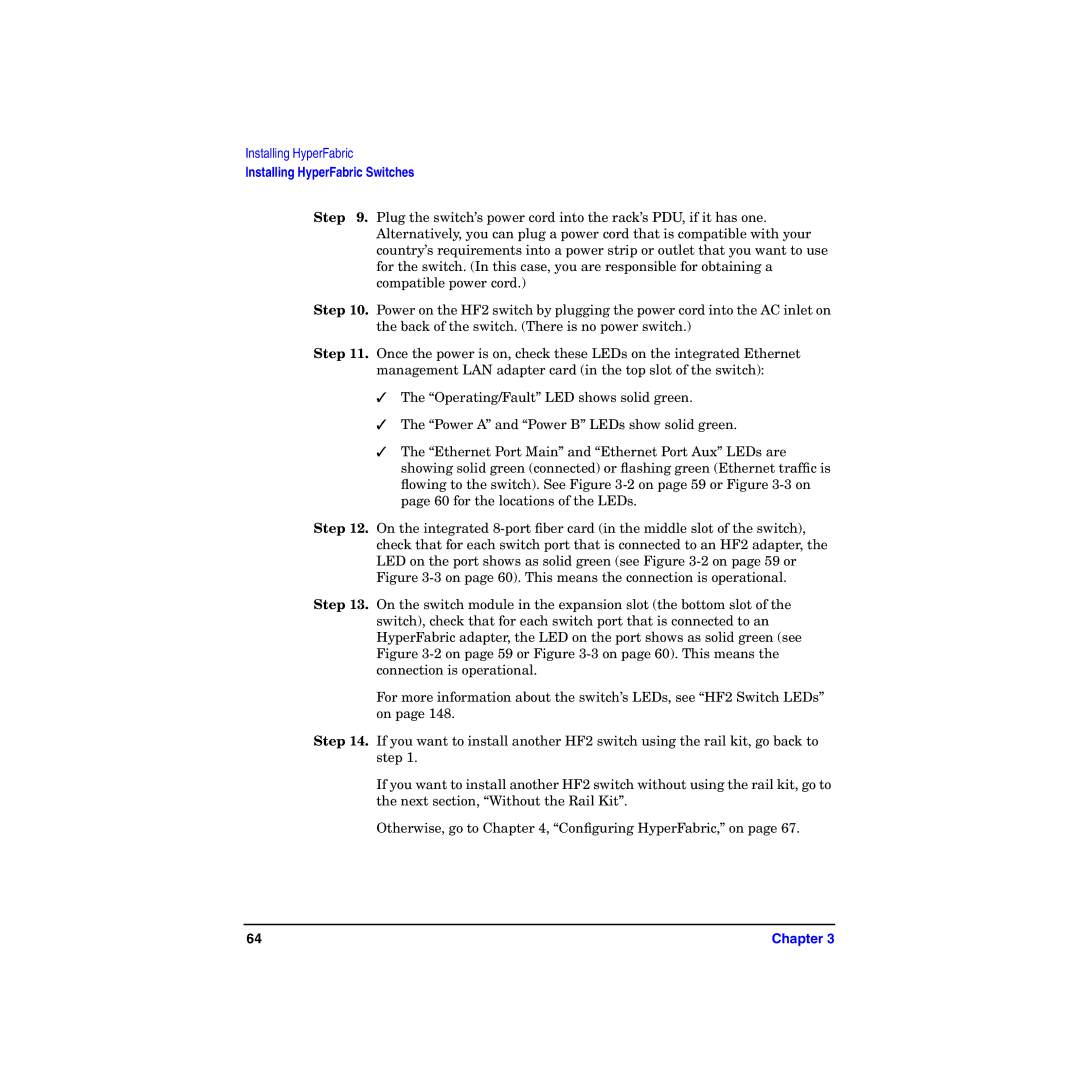Installing HyperFabric
Installing HyperFabric Switches
Step 9. Plug the switch’s power cord into the rack’s PDU, if it has one. Alternatively, you can plug a power cord that is compatible with your country’s requirements into a power strip or outlet that you want to use for the switch. (In this case, you are responsible for obtaining a compatible power cord.)
Step 10. Power on the HF2 switch by plugging the power cord into the AC inlet on the back of the switch. (There is no power switch.)
Step 11. Once the power is on, check these LEDs on the integrated Ethernet management LAN adapter card (in the top slot of the switch):
✓The “Operating/Fault” LED shows solid green.
✓The “Power A” and “Power B” LEDs show solid green.
✓The “Ethernet Port Main” and “Ethernet Port Aux” LEDs are showing solid green (connected) or flashing green (Ethernet traffic is flowing to the switch). See Figure
Step 12. On the integrated
Step 13. On the switch module in the expansion slot (the bottom slot of the switch), check that for each switch port that is connected to an HyperFabric adapter, the LED on the port shows as solid green (see Figure
For more information about the switch’s LEDs, see “HF2 Switch LEDs” on page 148.
Step 14. If you want to install another HF2 switch using the rail kit, go back to step 1.
If you want to install another HF2 switch without using the rail kit, go to the next section, “Without the Rail Kit”.
Otherwise, go to Chapter 4, “Configuring HyperFabric,” on page 67.
64 | Chapter 3 |
